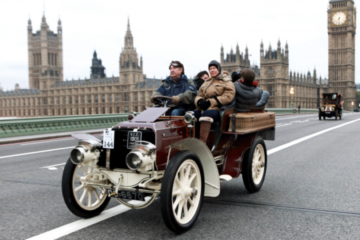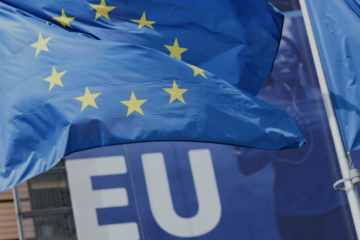In the Balkans, democracy hangs in the balance. It has been two decades since the end of the Yugoslav Wars, with peace-building and reconciliation projects proliferating in the region ever since. One might have hoped that the picture today would be largely different, that the nations once at war would democratise and move beyond conflict. This hope became evident at the 2003 summit of Thessaloniki, where the Western Balkans expressed their intention to join into the European framework. But the EU accession programme for the Western Balkans has ground to a near-halt amidst simmering ethnic tensions. How did this happen?
At the heart of the Balkans is Serbia – formerly the largest republic of Yugoslavia and the successor of its capital, Belgrade. There, on Njegoseva Street, a mural glorifying the former Republika Srpska Army General Ratko Mladic causes strife. Mladic, guilty for his role in the 1995 Srebrenica genocide, is deemed a Serb hero by ultra-nationalists, with the graffiti emerging a month after his life sentence for crimes against humanity was confirmed at the International Criminal Tribunal for the former Yugoslavia, in the Hague. Despite multiple attempts by concerned citizens to remove or deface the tribute, right-wing ethnonationalists protect the mural and often repair it within hours. This protection is afforded not only by the hooded young men reported as standing guard, but by the Serbian state too.
Serbia’s Interior Minister Aleksandar Vulin and President Aleksandar Vucic have both lent support to the rising ethnonationalist sentiment by protecting this monument. The Interior Ministry deployed police forces, abiding a ban on activists gathering to remove the mural. Vulin himself has spoken of Mladic’s sentence as a ‘revenge’ rather than a ‘verdict’, not accepting that the killing of more than 8,000 Bosnian Muslims constituted a genocide. It is only fitting that to him previous plans to paint over the wall were “vile and led by evil intent”. In a similar vein, Vucic has shown disdain for the activists, believing that attempts to remove the mural have been made into a ‘show’. Hours after the mural was fully painted over in early December, men were pictured with water bottles and cloth, trying to uncover Mladic – a fitting microcosm. Beneath the faux-democratic surface remains the sentiment which is once again destabilising the Balkans.
Since the Serbian Progressive Party (SNS) has come to power in 2012, there has been a regression in all markers of democracy. This trend appeared long before Vucic’s 2014 rise to power as Serbia’s prime minister – there is an uncomfortable continuity between the era of former President Slobodan Milosevic and the country’s politicians today. Vital to the period between Milosevic and Vucic is the ousting of the Serbian Radical Party (SRS), which gave way for the breakaway group of the SNS. Carrying nationalist credentials within its ranks allowed the SNS to appeal to supporters of the SRS, whilst the adoption of a technocratic image positioned it as an alternative to the Democratic Party, resulting in a return to government for hardened nationalists. The failure to make a clean break and ostracise those complicit in a genocidal brand of politics allowed for most to come back and assume control of the state apparatus.
Vucic has recreated the hostile media landscape for which he was once responsible as the minister for information under Milosevic. This has been done via various avenues. For one, the links between the Serbian state and key industries have a significant effect on independent media’s access to advertising contracts, providing the government with an indirect form of control. More direct interference through the purchase of advertising space is also apparent, evidenced in the days leading up to the 2017 presidential election where major Serbian newspapers shared the same front page of a political campaign poster: a red, white, and blue design with Vucic’s initials. In 2020, Vucic’s coalition won over 60% of seats in parliament, creating the supermajority necessary for constitutional change. Opposition parties boycotted this election, criticising the uneven playing field which the state had created. The turnout was considerably low yet would have been lower still, had the government not allegedly intimidated citizens into voting in the last hours of polling, as opposition parties claimed in press conferences following the election.
Those whom the government cannot directly influence become the subject of smear campaigns by state-aligned outlets, and these smear campaigns target anyone critical of the state. The judiciary has also been captured to the extent that opposition politicians are arrested and tried on charges of corruption. In 2018, Oliver Ivanovic, a Kosovo-Serb politician who had become critical of SNS dominance became the victim of a smear campaign. Ivanovic stated his belief that the SNS used Kosovo Serbs as pawns in a political game, which led to the Serbian media accusing him of “wishing to destroy Serbian unity and of working for the interests of Kosovar Albanians”. It is these tactics for maintaining the status quo of SNS power that created the conditions under which Ivanovic was assassinated in 2018 – the first assassination since that of Prime Minister Zoran Dindic in 2003.
It is necessary to view recent developments in the Balkans in the context of this development within Serbia: Republika Srpska’s threat to secede from the Bosnian federation and tension along the Kosovo border are rooted in a strong nationalist sentiment which the Serbian state cultivates to necessitate a ‘strong’ Serbia, claiming to protect the Serbs living within country borders but also those abroad. This is nowhere more apparent than in Aleksander Vulin’s reference to the ‘Serbian World’, seen by most regional commentators to be a substitute for ‘Greater Serbia’ – a deeply irredentist narrative which alludes to Serbia’s alleged role to exercise control over areas of historical significance to Serbs. It was this notion which culminated in the genocidal warfare within Yugoslavia.
As with the mural of Mladic on Njegoseva Street, you cannot simply paint over the revival of Milosevic in Serbia. The stability of the Balkans cannot be maintained through cooperation with a regime that is rooted in the same ideas that led to the Yugoslav Wars in the first place. Ex-Yugoslav countries tirelessly aim for justice and some semblance of prosperity, which cannot happen if this is the Serbia they must come to conduct relations with.


